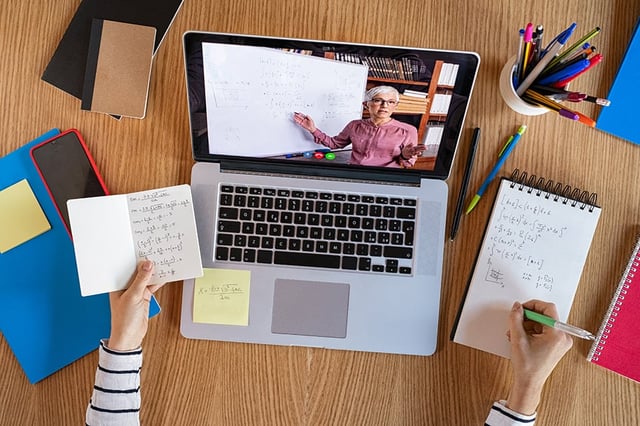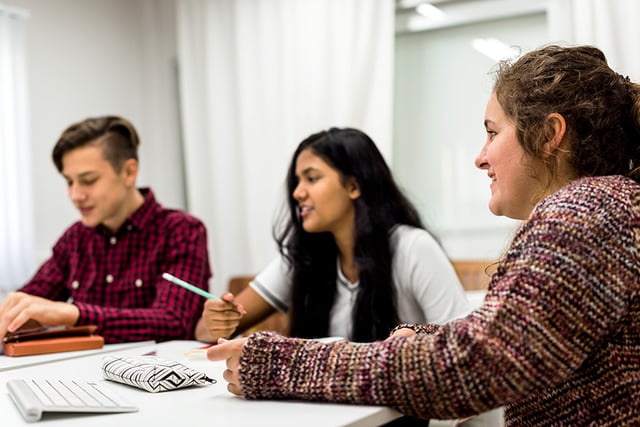Why Students Need Digital Literacy and How to Develop This Skill Set
 Insights By Jenn Miller
Insights By Jenn Miller
In today’s world, it is critical that our students and teachers become digitally literate. Never before in history have we been inundated with constant information from so many sources. Students are bombarded with social media, emails, and advertisements every minute.
This world of instant information is wonderful in so many ways. We are now more connected globally and culturally as humans. We can find information we need quickly. Learning has never been so easily accessed. We have information at our fingertips every day.
However, this new world we live in requires a new approach to technology instruction. Cyberbullying awareness and digital citizenship are no longer the only skills needed. Education needs to focus on creating digitally literate students. It is imperative to the future of our students and the world.
Technology Skills and Digital Natives
I refer to students in my middle school as digital natives. These students have never been in a world without internet access, tablets, or smartphones. All of our students have been given wi-fi access points and Chromebooks. We are “one for one” in my district, as are many districts around the country.
We must question whether we are preparing our students for this responsibility. As educators, I believe this is our duty.
Digital literacy impacts every subject and every teacher. We must embrace this and find ways to educate our students about this massive digital world. Because our students have grown up with technology, I believe the mistake we make is that we believe they can easily maneuver the digital world.
Often, students know how to use the technology. They can problem solve and operate the technology, and it can seem as if they know more than teachers who are often digital foreigners (i.e. we did not grow up in a world with this type of technology). But students do not necessarily know how to navigate and access the digital world with a critical eye.
Instead, I have found that students are often not sure how to distinguish truth from fiction online and cannot think critically about what they see in front of them. This online world is something they have always known, and they therefore trust it as truth. It is our job to teach them how to think critically about everything they encounter in the digital world.
What Is Digital Literacy for Students?
The American Library Association’s digital literacy task force defines digital literacy as “the ability to use information and communication technologies to find, evaluate, create, and communicate information, requiring both cognitive and technical skills."
Two components are key in this definition. First, students and teachers alike should know how to use technology to find accurate information. This is critical. This requires our students to understand how search engines work, evaluate resources, and determine what is true and false in the digital world. More importantly, this means students are taught to question the credibility and reliability of videos, articles, and sources.
Second, students need both the technical and cognitive skills to access information in the digital world. In order to be digitally literate, we must give our students the cognitive skills to question credibility, check photo sources, assess credentials, and evaluate if information is opinion or fact. This will look different in every classroom and subject area, but every teacher must teach this.
Teaching Digital Literacy
To Teachers
How can we influence and teach an entire generation to be digitally literate? First, we must focus on teachers. Our teachers need education and professional development on this topic. Teachers need the resources to teach students how to have a critical eye with information sources online. Teachers also need to know how to teach students to balance media, to maneuver social media, and to deal with issues they encounter online.
We must first arm our teachers with the knowledge they need and help students understand the importance of digital literacy.
To Students
Second, we teach the students. Limiting access will not work in the long run. Students will encounter misinformation and deal with issues online. It is not a matter of if, it's a matter of when. We must arm students with the skills to think critically about what they see, hear, or read online.
We cannot limit access in order to avoid these issues. Instead, we must teach students how to maneuver the digital world. This means we still protect them from inappropriate content online, but we make them aware of how to deal with an issue online by coming to an adult.
We must also teach students how to develop their online presence. What they put online will impact their future. Helping them understand this prepares them for success.
To Parents
Finally, we inform parents. Many parents are digital foreigners and believe their child is safe online because they limit access. Our job is to help parents be aware of the digital literacy skills their children need for their future. We must arm families with the knowledge they need to help monitor students’ access to the digital world.
We must establish ourselves as digital mentors, for both families and young learners.
Reaching Students and Their Families
A key question educators face involves how to reach students and families. If we approach teaching digital literacy like any other subject, it becomes white noise. Students will not buy into only lectures on the topic. I believe we must reach them by approaching every angle. I utilize Tik Tok trends, music, videos, social media, and funny memes to engage students and start conversations.
Of course, students need direct instruction and practice in evaluating sources and assessing credibility. First, we need to get their attention and open real conversations. Digital natives often listen best to digital sources, and educators can utilize these avenues. By doing so, we can constantly be sending the message that digital literacy is critical. I also believe families need the same approach.
Parents and families are busier than ever and need easy advice. Helping families have real conversations about the digital world, safety, and media balance will pay off in the long run. Families are not going to read a long newsletter or email, but may look at a quick video, meme, or discuss a question over dinner. Let's meet families where they are and with what they actually need.
How to Meaningfully –and Simply – Teach This
While it is critical to teach digital literacy skills to students, we also do not want to overcomplicate the topic. There are a plethora of resources and lessons out there for teachers. While many of these resources are excellent, it can be overwhelming and sometimes diverts us from the end goal. I urge all educators to simplify the process. Focus on teaching students how to question everything.
They need to question sources, emails, credibility, resources, advertisements and anything they encounter online. Teach students to be truth seekers and to focus on credibility over popularity. This skill will carry them far into the future.
Technology and the digital world are evolving daily. Students need skills to maneuver whatever changes they encounter. Teaching students to think critically has always been part of our job. If we can carry that over into the digital world, our students will not only be digital natives, they will be digitally literate.
Literacy has never been more critical than in our current times. Literacy now encompasses the digital arena. It is imperative that educators focus attention on critical thinking regarding online learning. We must empower our students to become more than digital natives. We must empower each of them to examine, question, and evaluate. Our future generation must be digitally literate. The future of the world may depend on it.




